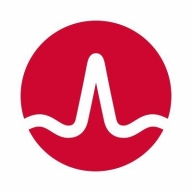

Symantec Advanced Threat Protection and Microsoft Defender for Identity compete in the cybersecurity category. While both offer robust solutions, Microsoft Defender for Identity seems to have the upper hand due to its seamless integration with Microsoft ecosystems and effective cloud security features.
Features: Symantec Advanced Threat Protection offers real-time threat analysis, integration with SIEM products, and strong network protection features. Microsoft Defender for Identity excels in identity protection, real-time behavioral analytics, and integration with Microsoft 365 components, ensuring security across both on-premises and cloud environments.
Room for Improvement: Symantec could enhance its graphical threat representation, flexibility, and cloud capabilities. Microsoft Defender for Identity needs better data correlation for anomaly detection, reduced false positives, and improvements in sensor load management.
Ease of Deployment and Customer Service: Symantec supports varied deployments but has faced inconsistent support quality, particularly post-acquisition. Microsoft Defender provides excellent cloud environment support with responsive technical assistance, earning positive user reviews.
Pricing and ROI: Symantec offers competitive pricing, although costs fluctuate with user licenses. Microsoft’s inclusion in the Microsoft 365 suite, especially for E5 license holders, makes it a cost-effective option with valuable bundled features, enhancing perceived value over Symantec.
| Product | Market Share (%) |
|---|---|
| Microsoft Defender for Identity | 6.4% |
| Symantec Advanced Threat Protection | 2.0% |
| Other | 91.6% |


| Company Size | Count |
|---|---|
| Small Business | 7 |
| Midsize Enterprise | 3 |
| Large Enterprise | 14 |
| Company Size | Count |
|---|---|
| Small Business | 9 |
| Midsize Enterprise | 3 |
| Large Enterprise | 13 |
Microsoft Defender for Identity integrates with Microsoft tools to monitor user activity, providing advanced threat detection and analysis using AI. It enhances proactive threat response and security visibility, making it essential for securing on-premises and cloud environments like Active Directory.
Microsoft Defender for Identity offers comprehensive monitoring and AI-driven user behavior analysis. It detects threats through real-time alerts and identifies lateral movements and entity tagging, ensuring robust security management. With excellent visibility via its dashboard, it supports customized detection rules and seamlessly integrates with SIEM platforms. While SecureScore and SecureScan provide robust environment security, there is room for improvement in cloud security, on-premises application integration, and remediation capabilities. Azure integration is limited, and the administrative interface could be more user-friendly. Users experience frequent false positives, affecting threat detection efficiency.
What key features stand out in Microsoft Defender for Identity?In specific industries such as education and finance, Microsoft Defender for Identity is crucial for securing on-premises Active Directory and Azure Active Directory environments. It effectively detects suspicious activities and manages conditional access policies, offering user and entity behavior analytics, endpoint detection and response capabilities. This helps prevent unauthorized access and strengthens overall security, making it an invaluable asset for organizations aiming to safeguard their digital infrastructure.
Symantec Advanced Threat Protection is a single unified solution that uncovers, prioritizes, and remediates advanced attacks. The product fuses intelligence from endpoint, network, and email control points, as well as Symantec’s massive global sensor network, to stop threats that evade individual security products. It leverages your existing Symantec Endpoint Protection and Symantec Email Security.cloud investments, so it does not require the deployment of any new agents. You can deploy a new installation of Symantec Advanced Threat Protection and start to discover suspicious activity in under an hour. Using the proven technology in Symantec Insight reputation based detection, Symantec SONAR behavioral analysis with the new Symantec Cynic sandbox and file analysis platform, Symantec Advanced Threat Protection provides better detection and prioritization than other vendors, allowing security analysts to “zero in” on just those specific security events of importance.
We monitor all Advanced Threat Protection (ATP) reviews to prevent fraudulent reviews and keep review quality high. We do not post reviews by company employees or direct competitors. We validate each review for authenticity via cross-reference with LinkedIn, and personal follow-up with the reviewer when necessary.